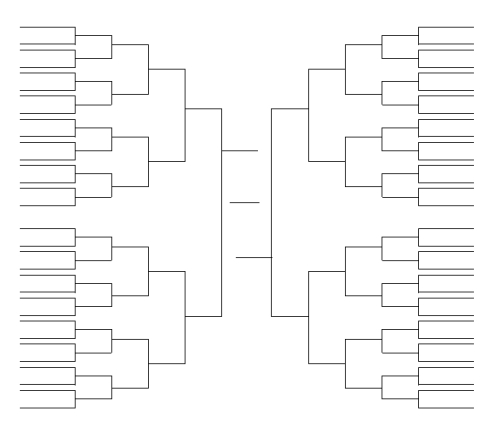Pradeep Mutalik of The New York Times recently blogged about a puzzle that is an instance of the Josephus Problem. The problem, restated simply, is this: there are n people standing in a circle, of which you are one. Someone outside the circle goes around clockwise and repeatedly eliminates every other person in the circle, until one person — the winner — remains. Where should you stand so you become the winner?
Here’s an example with 13 participants:

As Pradeep and his readers point out, there’s no need to work through the elimination process — a simple formula will give the answer. This formula, you won’t be surprised to hear, has connections to the powers of two and binary numbers. I will discuss my favorite solution, one based on the powers of two.


